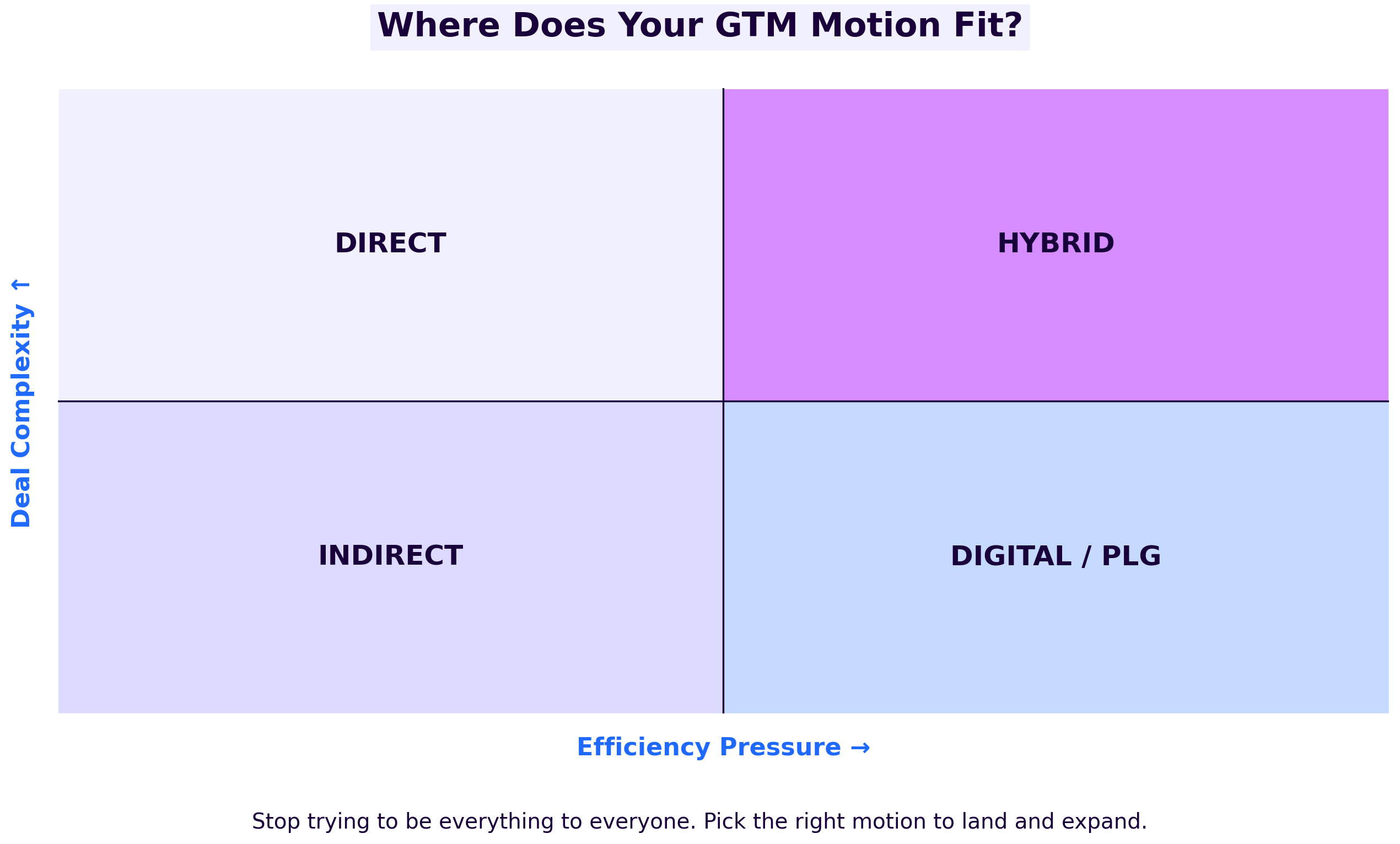What is Outcome Marketing and Why it Matters
Outcome Marketing: A Playbook for SMB CEOs and Marketing Leaders

Most companies are pretty good at figuring out their bets. They know the what (products) and the who (markets). That’s the easy part.
But when it comes to the how, the motions, they fall into a familiar trap: trying to be everything to everyone. Direct sales for big enterprises, distribution for mid-market, digital for SMBs… all at once. On paper it looks like coverage. In reality it’s chaos: competing priorities, wasted spend, and customers who don’t know how they’re supposed to buy.
Your go-to-market strategy isn’t just about what you sell and who you sell it to. It’s about how you reach and expand in your market. That’s where motions come in.
Some companies go direct, a sales-led approach, heavy on people and relationships. Others go indirect, leaning on distributors, resellers, or strategic partners to scale. Increasingly, companies are turning to digital, inbound campaigns, product-led growth, or self-service models that scale without armies of reps.
None of these motions are wrong. But running all of them simultaneously, without clear intent, is a bit like throwing spaghetti at the wall to see what sticks. It looks busy, but it isn’t strategy.
Motions aren’t just about how you land a customer. They’re also about how you expand.
The sequencing matters. Land with one motion, expand with another. That’s how you build efficiency instead of chaos.
Choosing the wrong motion isn’t just inefficient. It’s destructive.
Channel conflict erupts when partners and direct sales teams step on each other. Overhead balloons when digital and direct duplicate the same effort. Customers get confused when they’re approached with three different buying paths at once.
The fallout shows up fast: higher customer acquisition costs, slower sales velocity, and executive meetings that sound more like political debates than growth plans.
The fix is simple in theory, harder in practice: be intentional. Map your motions the same way you map your products and markets.
One company we worked with had eight different applications and nearly as many opinions about how to sell them. The board wanted one thing. Management wanted another. Sales, product, and alliances all had their own favorites. Everyone had ideas about which products to land with and which to expand with.
The problem? Nobody had aligned on how those bets would be executed. Should they go digital? Through distribution? Or direct sales? Each option had a different CAC profile, but the targets were muddled and the motions collided.
Over time, the picture became clearer. By looking at how customers actually bought, they discovered a natural sequence: certain products were the logical entry point that opened the door to others. That led to a deliberate land motion that set up a clean expand motion, with cross-sell and upsell happening more predictably.
The impact was dramatic: focus sharpened, motions aligned, and efficiency soared. CAC dropped from $1 spent for every $1 booked to just 60 cents on the dollar, a direct payoff from aligning products, markets, and motions.
When companies get this right, the results show up everywhere: faster sales cycles, lower CAC, healthier LTV:CAC ratios, and customers who actually enjoy the buying process.
When they don’t, you see the opposite: random acts of marketing, bloated sales teams, partner disputes, and a pipeline that never quite delivers.
Most CEOs and marketing leaders are smart enough to know their products and their markets. But it’s the motions, the how, that separate the focused from the frantic.
Your GTM motions can either be disciplined and deliberate, or they can be an attempt to be everything to everyone. Only one scales.

Outcome Marketing: A Playbook for SMB CEOs and Marketing Leaders

A Practical Framework that Turns Potential into Performance How to align sales, marketing, and finance—before the next “why are we behind plan?”...

What Is a Go-To-Market Strategy? A go-to-market (GTM) strategy is a structured approach for launching a product or service with maximum market...